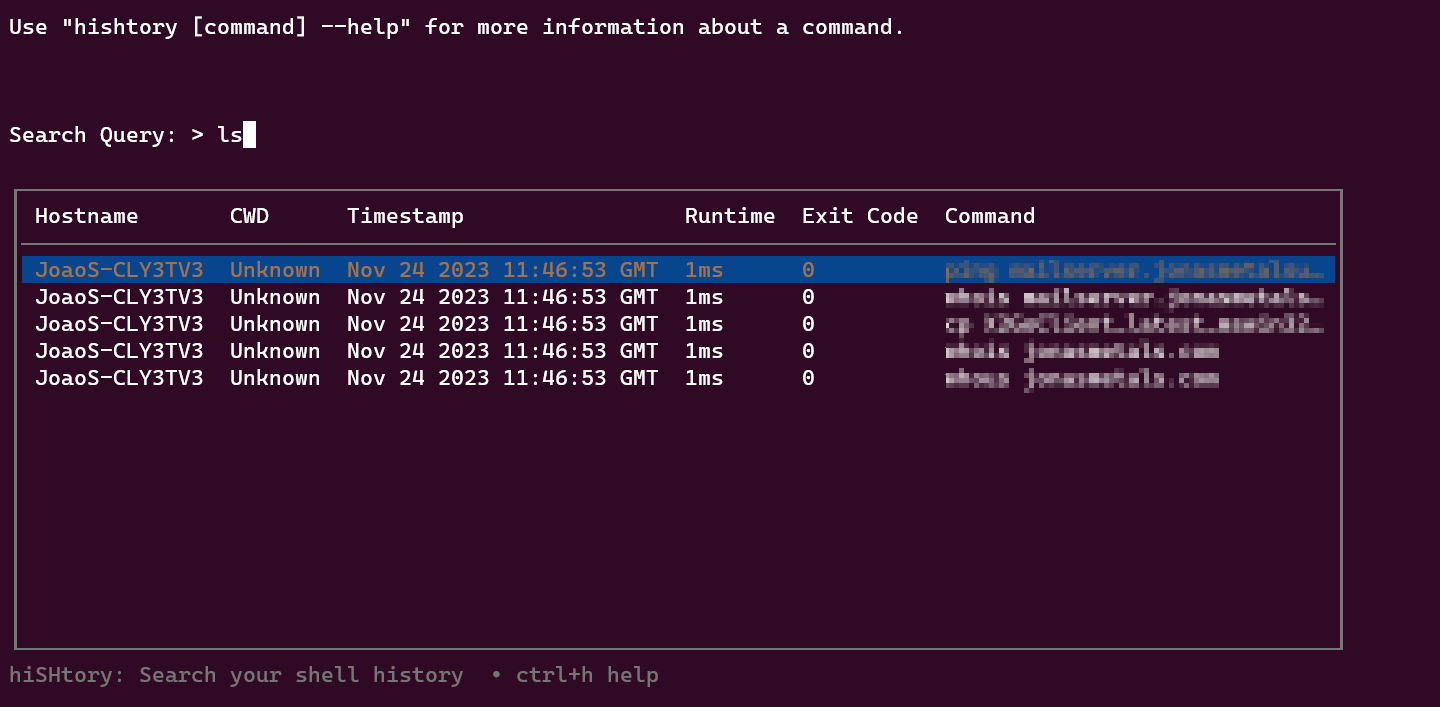A revolution to your command history

Using hishtory to manage command history across multiple systems
The hishtory command is a third-party command-line tool written in Go that provides additional features for managing your command history on Linux servers and across multiple systems. It is not installed by default on most Linux distributions, but you can install it using your package manager. For example, to install hishtory on Debian or Ubuntu, you would type the instructions from the GitHub site https://github.com/ddworken/hishtory
If you are " in a rush", just type the command below:
curl https://hishtory.dev/install.py | python3 -Once hishtory is installed, you can use it to view, search, and manipulate your command history in a similar way to the built-in history command. However, hishtory also provides a number of additional features, such as:
- Support for multiple history files. By default,
hishtorywill use the same history file as thehistorycommand.However, you can also configurehishtoryto use multiple history files, which can be useful for separating your command history into different categories or for using your command history across multiple systems. - Support for history tags. History tags allow you to group related commands together, which can make it easier to find and manage your command history.
- Support for history search filters. History search filters allow you to search your command history based on criteria such as the date, time, command, or history tag, which can save you time when you are looking for a specific command.
- Support for history scripts. History scripts allow you to automate the process of running commands from your command history, which can save you time and effort when you need to run the same commands repeatedly.
- End-to-end encryption.
hishtoryencrypts your command history data before sending it to the backend server,which ensures that your data is protected from unauthorized access.
Using hishtory across multiple systems
To use hishtory across multiple systems, you can use the hishtory sync command. This command will synchronize your command history between the local system and a remote system.
To synchronize your command history with a remote system, you will need to specify the hostname or IP address of the remote system and the path to the remote system’s command history file. You can do this using the -r and -f options,respectively.
For example, to synchronize your command history with a remote system with the hostname my-remote-server and the command history file path /var/log/hishtory, you would type the following command:
hishtory sync -r my-remote-server -f /var/log/hishtory
Once you have synchronized your command history with a remote system, you can use the hishtory fetch command to fetch the remote system’s command history to the local system. This can be useful if you need to access the command history from a previous session or if you need to use the command history from a different system.
To fetch the remote system’s command history to the local system, you will need to specify the hostname or IP address of the remote system. You can do this using the -r option.
For example, to fetch the command history from the remote system with the hostname my-remote-server, you would type the following command:
hishtory fetch -r my-remote-server
Conclusion
The hishtory command is a powerful tool for managing your command history on Linux servers and across multiple systems. By using the features and tips in this post, you can learn how to use hishtory to save time, troubleshoot problems, and automate tasks.




